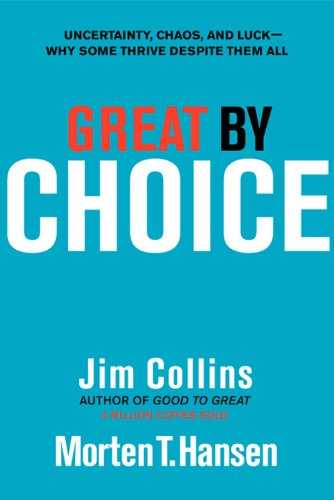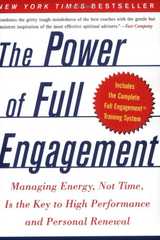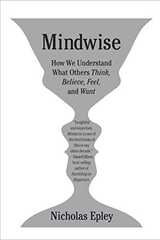
Hooked: How to Build Habit-Forming Products
byNir Eyal
Hooked is well structured and made good use of visual aides. Although, having read the Power of Habit and some other Behavioral Science related books, I felt I learned very little from Hooked. I don't feel it helped push the boundaries of produce development. It was effective in showing how existing habit principles can be used to keep users engaged, and I feel a lot of product and marketing folks can learn from it if they have little background in behavioral science. The modern day examples from popular apps provide good case studies for product people. Hooked's version of the Habit Loop is the Hook Model, a framework that consists of a Trigger, what initiates the loop, it can be internal of external triggers. The Action, what is the simplest behavior they can take in the app. Variable Reward, how are they rewarded for this behavior. And Investment, the users investment of data and or time into the app, increasing their value or dependency on the app, leading to more loops.
Motivations to Read
I am very interested in behavioral science and this book Hooked was spread like crazy across a number of the blogs and podcasts I listen to. As a super user of numerous tracking apps, my habits have formed around numerous apps and services and I would like to better understand how those habits were formed. As a software engineer and Designer I would also like to know how to build better products.
3 Reasons to Read
- Practical insights to create user habits that stick.
- Actionable steps for building products people love.
- Fascinating examples from the iPhone to Twitter, Pinterest to the Bible App, and many other habit-forming products
Notable Quotes
“There are three ingredients required to initiate any and all behaviors: (1) the user must have sufficient motivation; (2) the user must have the ability to complete the desired action; and (3) a trigger must be present to activate the behavior.” - Nir Eyal
“We often think the Internet enables you to do new things … But people just want to do the same things they've always done.” - Nir Eyal
“Many innovations fail because consumers irrationally overvalue the old while companies irrationally overvalue the new.” - Nir Eyal
“Internet is, “a giant machine designed to give people what they want.” - Nir Eyal
“Reducing the thinking required to take the next action increases the likelihood of the desired behavior occurring unconsciously.” - Nir Eyal
Hooked: How to Build Habit-Forming Products Notes & Summary
By mastering Habit Forming Product Design, a company can make their product part of their users everyday routines.
"Habits are defined as "behaviors done with little or no conscious thought."
Nir uses the concept of 'The Hook Model' which seems similar to the Habit Loop concept from The Power of Habit by Charles Duhigg.
"The Hook Model describes an experience designed to connect the user's problem to a solution frequently enough to form a habit."
The Hook Model has four phases: trigger, action, variable reward, and investment.
"The Hook Model is designed to connect the user's problem with the designer's solution frequently enough to form a habit."
The Hook Model
Trigger
A trigger is the initiator of behavior.Triggers come in two types: external and internal.
Action
The behavior after the trigger done in anticipation of a reward.
Variable Reward
A not so consistent reward; a surprise that creates a craving to want to continue to engage.
Investment
"The investment occurs when the user puts something into the product of service such as time, data, effort, social capital or money.
It implies an action that improves the users experience with the service.
Building habit-forming products, increases Customer Life Time Value (CLTV): the amount of money made from a customer before that they stop using the product.
"Products that change customer routines are less susceptible to attacks from other companies."
What this means is that even if the competitor has a better product, if the user has a well-developed habit of using yours, it will be difficult for them to switch; change is hard.
The Habit Zone
The frequency of the behavior and the perceived utility, how useful and rewarding the behavior is in the user's mind over alternative solutions).
Vitamins Versus Painkillers
"Painkillers solve an obvious need, relieving a specific pain, and often have quantifiable markets."
"Vitamins, by contrast, do not necessarily solve an obvious pain point. Instead, they appeal to user' emotional rather than functional needs."
The author, Nir, believes that habit forming products are both: "These services seem at first to be offering nice-to-have vitamins, but once the habit is established, they provide an ongoing pain remedy."
"Designing habit-forming products is a form of manipulation. Product builders would benefit from a bit of introspection before attempting to hook users to make sure they are building healthy habits, not unhealthy addictions."
"Habit-forming technologies start changing behavior by first cueing users with a call to action."
The Trigger Phase
Types of External Triggers
- Paid Triggers: Paying for attention or reengagement. Costly over the long run, not sustainable or needed with true habit-forming products.
- Earned Triggers: Prompts from media or other platforms like popular blog posts or viral videos and other PR initiatives. Can lead to short spikes of awareness.
- Relationship Triggers: Word of mouth, online social promotion and other recommendations. Building an engaged user who is happy to share the benefits your product provides.
- Owned Triggers: A trigger where the user opts in that they want to continue receiving communications, i.e newsletters, notifications, etc. Owned triggers prompt repeat engagement.
Internal Triggers
"When a product becomes tightly coupled with a thought, an emotion, or a preexisting routine, it leverages an internal trigger."
"Internal Triggers tell the user what to do next through associations stored in the user's memory."
"Negative emotions frequently serve as internal triggers."
"To build a habit-forming product, makers need to understand which user emotions may be tied to internal triggers and know how to leverage external triggers to drive the user to action."
I liked this referenced quote from Evan Williams, cofounder of Blogger, Twitter and most recently Medium.
"(the internet) is a giant machine designed to give people what they want.[..] We often think the Internet enables you to do new things... But people just want to do the same things they've always done."
"5 Whys Method
Originated from the Toyota Production system and was described by Taiichi Ohno, "the basis of Toyota's scientific approach... by repeating 'why?' five times, the nature of the problem as well as its solution becomes clear."
The Action Phase
The Fogg Behavior Model
"The Fogg Behavior Model is represented in the formula B=MAT, which represents that a given behavior will occur when motivation, ability, and a trigger are present at the same time and in sufficient degrees."
Dr.Edward Deci defines motivation as "the energy for action."
"Fogg (believes)states that all humans are motivated to seek pleasure and avoid pain; to seek hope and avoid fear; and finally, to seek social acceptance and avoid rejection."
"According to to the Fogg Behavior Model, ability is the capacity to do a particular behavior."
Elements of Simplicity
The factors that influence a tasks difficulty.
- Time
- Money
- Physical Effort
- Brain cycles (mental effort)
- Social deviance (level of accepted behavior)
- Non-routine(How far is it from normal routines)
For a business increasing user motivation to take action can be costly and time-consuming. Instead, focus on simplicity and ease of use, lowering the barriers to taking action.
Four Mental Biases & Heuristics (mental shortcuts)
The Scarcity Effect
The appearance of scarcity (lack of availability) tends to make us believe that something is more valuable.
The Framing Effect
Context shapes perception. "The mind takes shortcuts by our surrounds to make quick and sometimes erroneous judgments."
The Anchoring Effect
"People often anchor to one piece of information when making a decision."
The Endowed Progress Effect
Seeing progress feeds on itself. If we can make getting started easier, we increase the motivation for people, believing their are nearing a goal, even if it's far away.
The Variable Reward Phase
Three Variable Reward Types
- Rewards of the Tribe
"Rewards of the tribe is the search for social rewards fueled by connectedness with other people."
"Our Brains are adapted to seek rewards that make us feel accepted, attractive, important, and included."
We want to feel part of the group and our behaviors are influenced by activities that conform slightly to the group's pattern or things that bring social validation.
Through social learning theory, if we see certain behaviors being rewarded, we are more likely to alter our own behaviors or beliefs to increase chances of a reward.
- Rewards of the Hunt
"Rewards of the hunt is the search for material resources and information."
When humans started consuming more animal protein, it was a significant milestone that let to better nutrition and eventually bigger brains. However, early humans had to exert more energy to hunt these animals as archeological evidence shows that the spears and arrows we associate with hunting were only invested within the last five hundred thousand years.
Early humans used a hunting technique known as "persistence hunting", in which a couple hunters would separate a single animal from the herd and then more hunters would join in to chase down the animal to the point of exhaustion; then going in for the kill.
The search for resources in the variable reward that defines the rewards of the hunt. In modern times, those resources are more information based.
- Rewards of the Self
"The rewards of the self are fueled by 'intrinsic motivation' as highlighted by the work of Edward Deci and Richard Ryan. Their self-determination theory espouses that people desire, among other things, to gain a sense of competency. Adding an element of mystery to this goal makes the pursuit all the more enticing."
The Investment Phase
"The investment phase is the forth step in the Hook Model.
Unlike the action phase, which delivers immediate gratification, the investment phase concerns the anticipation of rewards in the future."
"Companies that successfully change behaviors prevent users with an implicit choice between their old way of doing things and a new, more convenient way to fulfill existing needs."
IKEA gets their customers invested in their products by asking them to assemble their own furniture.
"To avoid the cognitive dissonance of not liking something that others seem to take so much pleasure in, we slowly change our perception of the thing we once did not enjoy."
We rationalize to give reasons for our behaviors, even if those behaviors were influenced by external forces and we didn't intend for the actions we did.
"Habit-forming technologies leverage the user's past behavior to initiate an external trigger in the future."
Five Fundamental Questions for Building Effective Hooks
- What do users really want? What pain is your product relieving? (Internal trigger)
- What brings users to your service? (External trigger)
- What is the simplest action users take in anticipation of reward, and how can you simplify your product to make this action easier? (Action)
- Are users fulfilled by the reward yet left wanting more? (Variable reward)
- What "bit of work" do users invest in your product? Does it load the next trigger and store value to improve the product with user? (Investment)
"Creating habits can be a force for good, but it can also be used for nefarious purposes. What responsibility do product makers have when creating user habits?"
| Materially improves the user's life | Peddler | Facilitator |
| Does not improve the user's life | Dealer | Entertainer |
| The marker does not use it | The maker uses it |
Habit Testing helps you uncover true fans of your product and which qualities of it are habit forming and why.
Three Steps of Habit Testing
- Analyze product data to identify how people are using the product.
- Codify these findings in search of habitual users. To generate new hypotheses, study the actions and paths taken by devoted users.
- Modify the product to influence more users to follow the same path as your habitual users, and then evaluate these results and continue to modify as needed.
"New Behaviors that few people see or do, yet ultimately fulfill a mass-market need - can inform future breakthrough habit-forming opportunities."
"Keen observation of one's own behavior can lead to new insights and habit-forming product opportunities."




